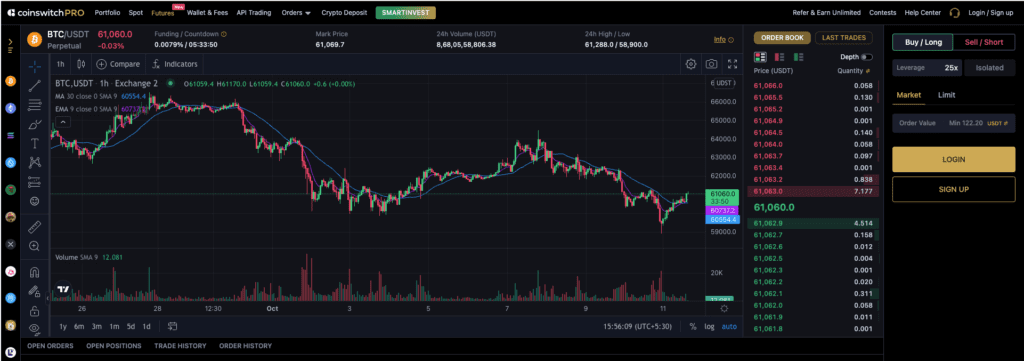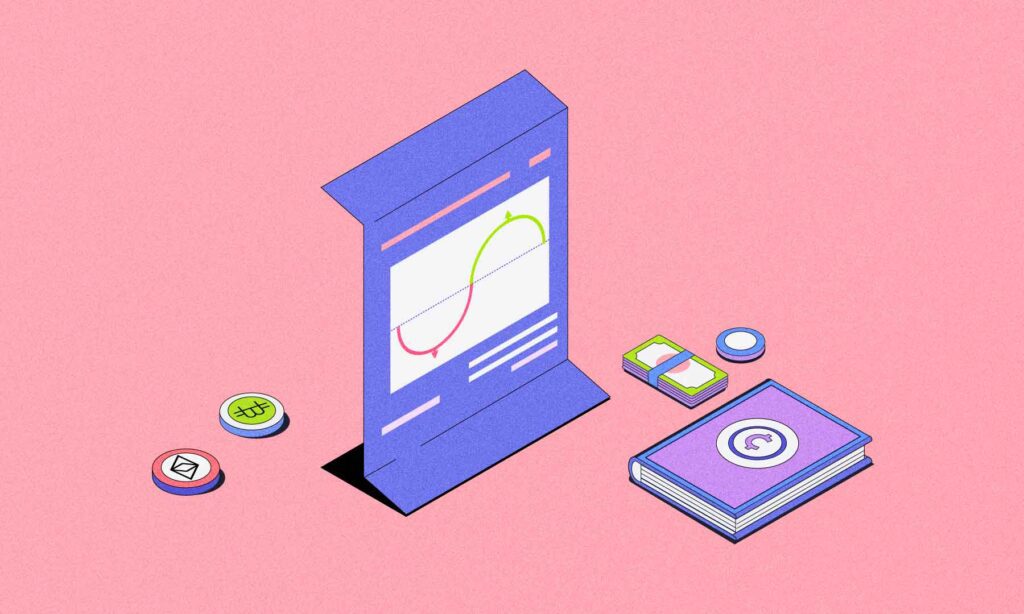Introduction
In the fast-changing world of crypto trading, perpetual futures contracts are becoming very popular. These contracts are different from traditional futures because they don’t have an expiry date. To keep the price of the perpetual contract close to the spot price, a special system is used: the funding rate mechanism. This system helps maintain a good balance in the perpetual futures market. It keeps the price from moving too far away from the real asset price.
Understanding crypto funding rates
Crypto funding rates are very important for keeping perpetual futures markets steady and trustworthy. They help balance how many long and short positions traders have. This alignment keeps the price of perpetual contracts in line with the spot price of the underlying crypto.
For example, let’s say many traders think Bitcoin will go up. This can create many long positions on perpetual futures contracts. If this happens, the price of the perpetual contract may go much higher than Bitcoin’s spot price. Funding rates help fix this issue.
Read More: Mastering Crypto Analysis: Top Techniques & Strategies For Trading Futures
The basics of funding rates in crypto futures
When the price of the perpetual contract is higher than the spot price, people who have long positions must pay a funding rate to those who hold short positions. On the other hand, if the contract’s price is lower than the spot price, the short position holders pay the long position holders.
The funding rate is not a fixed number; it changes because of different factors. The main factor is the gap between the perpetual contract price and the spot price. Other factors like interest rates and market mood can also affect the funding rate.
Traders need to understand how these factors interact if they want to be successful in crypto perpetual futures. This knowledge adds complexity while also offering opportunities.
Significance of funding rates in market dynamics
Funding rates do more than help match prices; they also show us how traders feel about the market. By watching these rates, you can gain insights into what traders think and what might happen to prices in the future.
When funding rates are positive, this usually means the market is optimistic. Traders who believe prices will rise are willing to pay extra to keep their long positions. On the other hand, negative funding rates often mean traders expect prices to fall. This shows a trend towards short positions as traders think that prices will go down.
If traders understand how funding rates connect to the overall market, they can make better choices. This helps them improve their trading plans and deal effectively with the ups and downs of the crypto market.
The mechanics behind funding rates
Funding rates might sound complicated, but they are quite simple. These rates help the perpetual futures market show the true spot price of the asset. They also stop the prices from drifting apart for too long.
To calculate funding rates, you need to look at different factors. The main factor is the difference between the price of the perpetual contract and the spot price of the crypto. This difference is key in deciding the funding rate.
Calculation and adjustment processes
Typically, the funding rate is calculated every eight hours. However, it does not work alone. It uses a formula that considers the difference between the price of the perpetual contract and the index price (also known as the spot price).
The average funding rate shows the balance between people who want to buy (long) and those who want to sell (short) in the market. If the perpetual contract is priced higher than the index, the people in long positions have to make a payment. On the other hand, if the contract is priced lower, the short position holders make the payment.
This way of adjusting helps keep the price of perpetual futures close to the spot price. This prevents big changes that last a long time. When traders understand how these changes work, they can better prepare for shifts in the funding rate.
Role of exchanges in setting rates
While the core ideas behind funding rates are similar on different crypto exchanges, each exchange has its own futures market. They can set their own calculations and how often they change funding rates.
For example, major exchanges are popular for Bitcoin trading, so they may have small differences in how they calculate their funding rates. These differences can come from their index price sources, risk management methods or the overall market conditions.
Traders need to understand the specific rules about funding rates on their preferred exchange. These differences can affect trading costs and profits based on the exchange and the crypto being traded.
BTC funding rate explained
When people talk about funding rates in crypto, Bitcoin (BTC) is usually the main focus. As the first and biggest crypto by market size, Bitcoin’s price changes and market trends affect the entire crypto world.
The Bitcoin funding rate shows how traders feel and where they stand in the Bitcoin perpetual futures market. It measures the cost of keeping a long or short position in Bitcoin perpetual contracts.
Impact of BTC funding rates on futures trading
In the fast-changing world of crypto trading, especially in the perpetual futures market, the Bitcoin funding rate is very important. This rate affects how much money traders can make and how the market works. It’s crucial for anyone trading Bitcoin futures to understand this rate.
A positive Bitcoin funding rate means traders are optimistic. They are willing to pay extra to keep long positions. On the other hand, a negative funding rate shows that traders are not optimistic. Those who bet against Bitcoin (shorting) receive payments through funding. These rates impact how profitable a trading position may be, especially for traders using leverage.
Also, very high or very low funding rates might show that the market is about to change direction. Traders often see these extreme rates as a sign that the market may be stretched too far in one direction.
Interpreting positive vs negative funding rates
A positive funding rate for BTC means that traders are hopeful about Bitcoin’s price. People who hold long positions are willing to pay extra to keep their positions open. They expect prices to rise even more. This usually happens when the market is optimistic and prices are going up.
A negative funding rate, however, shows that traders have a more negative outlook. Those who short-sell have the upper hand. They receive payments to keep their positions open. This tends to happen when the market overall is not doing well, and traders predict that Bitcoin’s price will go down.
Looking at past trends and seeing how funding rates link with other market signs, like open interest and trading volume, can help traders. These trends can show possible changes in market feelings and aid in making better decisions.
Read More: Funding Rate Crypto Futures: Manage Liquidation Risks and Maximize Profits
Correlation between funding rates and BTC prices
The funding rate can help us understand how people feel about the market, but it doesn’t always show what Bitcoin prices will do next. By looking at how funding rates connect to BTC prices, we can learn more about possible price trends. This is especially true when funding rates are either very high or very low.
High funding rates usually mean that people are too optimistic, which could lead to a price bubble. On the other hand, very low or negative rates often show that the market might be oversold or that traders are feeling scared.
Analyzing trends and market sentiments
Observing funding rate trends on charting platforms like TradingView can help you understand market feelings. Many traders use TradingView to see funding rates on different exchanges. By looking at both historical and real-time data, you can start to grasp the mood around a specific crypto.
For example, if the funding rate for PERP on a certain ABC exchange is often high and positive, this may mean traders are very optimistic. This could suggest that a price drop might happen soon.
But keep in mind that you shouldn’t rely solely on funding rates to predict how the market will move. Using funding rate insights along with technical and fundamental analysis can make your market predictions more accurate.
Case studies: Highs and lows in funding rates
Looking at times when funding rates were very high or very low can help us understand how the funding rate system works. Studying these examples can aid traders in seeing the link between funding rates and market activity.

| Date | Exchange | Cryptocurrency | Funding Rate |
| 11th Oct 2024 | CoinSwitch | Bitcoin (BTC) | 0.0078% |
| 11th Oct 2024 | CoinDCX | Bitcoin (BTC) | -0.001% |
In the past, during times of big market changes, exchanges like A and B above have shown big swings in funding rates. For example, in the 2021 bull market, Bitcoin’s funding rates on these exchanges often jumped due to strong bullish feelings. Traders were ready to pay high prices.
Conclusion
Understanding funding rates is important for successful trading in the crypto market. By knowing the basics and how funding rates work, traders can make better choices. The connection between funding rates and BTC prices shows how the market and feelings can affect each other. Looking at trends and examples can help traders deal with changes in funding rates. With this knowledge, traders can plan better and predict market changes. Keep up with funding rates to improve your trading choices and take advantage of chances in the changing crypto world.

FAQs
1. How do funding rates influence trading decisions?
Funding rates give important information for traders in perpetual futures markets. By knowing funding rates, traders can understand how the market is moving and what people are feeling about it. This knowledge helps them make better choices about when to enter or exit and learn how to handle risk better.
2. Can funding rates predict market movements?
Funding rates can give hints about how people feel and what might happen in the crypto market. However, it is important to look at these trends with other signs to make smart trading choices.
3. What are the differences between various crypto funding rates?
Crypto funding rates can change from one exchange to another and between different cryptos. These changes happen because of factors like liquidity, trading volume, and how the perpetual contract connects to its spot price.
4. How often are funding rates updated?
Funding rates on most crypto exchanges are updated regularly. This usually happens every eight hours. However the exact timing can change based on the exchange and the specific perpetual futures contract being traded.








